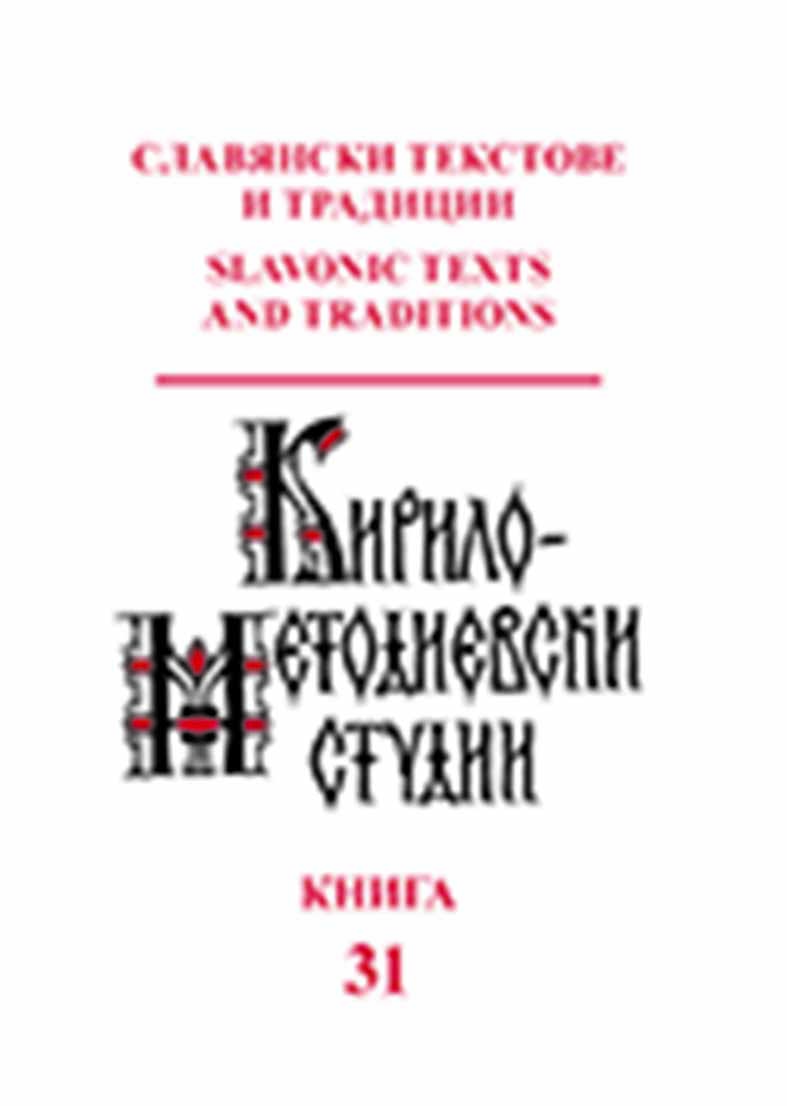Рукописне маргиналије и структура Минеја бр. 11 из манастира светог Пантелејмона на Атосу
Manuscript Marginalia and the Structure of the Menaion No. 11 from the St. Panteleimon Monastery on Mount
Athos
Author(s): Irena ŠpadijerSubject(s): Language studies, Language and Literature Studies
Published by: Кирило-Методиевски научен център при Българска академия на науките
Keywords: Manuscript marginalia; menaion; structure of the menaion; RPMA 11.
Summary/Abstract: The structure of the Slavic menaion, especially the oldest examples, is a topic that has not been fully researched yet and it is still very intriguing. The early Greek menaia, dating back to very ancient times, were probably reflected in the early versions that determined the specificity of the Slavic (translated) menaion. The main classification in the chronological sequence of this type of liturgical book, and in relation to its structure, is between the Studite (Evergetis) and the so-called Jerusalem type ‒ relative to the type of typikon that regulated the liturgical practice. The paper does not look in detail into the differences in the structure of the menaion of the pre-Jerusalem and Jerusalem types. These differences are analysed by relying on the surviving 13th- and 14th-century menaia and some manuscripts written much later, but from antigraphs of great antiquity. These later-date copies of an archaic structure were created, as a rule, in the peripheral parts of specific communities, on the edges of the main trends, and they belong to the secondary, lateral sides of the copying tradition that preserved the traces of the long-lost liturgical practice. However, regarding the structural diversity of the services in the Menaion No. 11 from the St. Panteleimon monastery (RPMA 11), it is necessary to draw attention to two marginalia in this codex (f. 136b and f. 232а), that reveal possible reasons for the specific composition of this particular manuscript. The Menaion No. 11 belongs to the transitional type, containing some features of the Jerusalem type, whereas the compositional diversity of the religious services in it may be the feature of this “transience”, the disordered and unharmonised liturgical practice. On the other hand, such diversity is the consequence of the different templates used by the scribe/editor. Furthermore, the marginalia analysed in this paper are indicative of something else as well: the factor of coincidence is sometimes present in the solutions observed in the manuscript codices. This fact not only shows that our conclusions may not be set in stone and that the results obtained may be misleading, but also that we should be very careful when drawing conclusions about the types and the structure of these liturgical miscellanies.
Journal: Кирило-Методиевски студии
- Issue Year: 2021
- Issue No: 31
- Page Range: 345-358
- Page Count: 14
- Language: Serbian
- Content File-PDF

